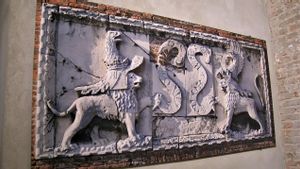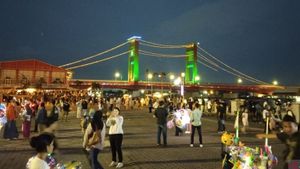YOGYAKARTA - Talking about what is the rituals of Hajj, which is an activity that needs to be followed by pilgrims who want to go to the Holy Land. Therefore, this time we will discuss the rituals of Hajj, see until it is finished, yes!
Usually, the manasik hajj is a simulation of the pilgrimage before actually doing it in Mecca. Generally, manasik is organized by the Ministry of Religion to help those who will soon depart to fulfill the fifth Islamic pillars.
Sourced from the Big Indonesian Dictionary (KBBI), the rituals of Hajj are matters related to the pilgrimage, such as ihram, tawaf, sai, and wukuf.
Manasisik hajj is a demonstration of the implementation of the pilgrimage in accordance with its pillars before leaving for the Holy Land.
What To Do During Hajj Manasik
After recognizing what is the rituals of Hajj, then what is being tried during the implementation of Hajj rituals?
Reporting from the Jambi Ministry of Religion website, pilgrims who are exploring the rituals of Hajj will be trained about the procedures for the implementation of the pilgrimage, such as the pillars of the Hajj, the requirements, the obligatory matters, the matters that are enlivened, or things that are prohibited during the implementation of the pilgrimage.
This exercise is not just a theory, but practiced as much as possible with the situation in Saudi Arabia.
Orders And Procedures For Manasik Hajj
Reporting from the book Fiqh Madrasah Aliyah written by Harjan Syuhada and Sungarso, the following is the order and procedure for the pilgrimage which is also studied in manasik.
I. Starting Ihram
Participants start worship with ihram from the predetermined waqat. Miqat is a time limit and place for performing the pilgrimage and Umrah. There is the miqat zami (time limit) and miqat makani (restrictions).
There is also the miqat zami which is in the month of Syawal, Zulkaidah, and Zulhijah. Meanwhile, miqat makan is found in several cities depending on the direction of the presence of the pilgrims. The following is the order of application of ihram
II. Wukuf in Arafah
Wukuf is staying in Arafah which will be held on Zulhijah 9. Wukuf begins after the sun slips until dawn on 10 Zulhijah or Eid al-Adha. Some of the practices that can be done during wukuf are as follows:
III. Mabit in Muzdalifah
Mabit means spending the night. Muzdalifah is a place located between Arafah and Mina. After midnight, the pilgrims departed from Arafah towards Mina. At Muzdalifah, the pilgrims stopped for a while. Some of the practices that can be done, among others as follows:
IV. Throw Jumrah
After that, the congregation is obliged to throw the aqabah jumrah, namely throwing stones at the stone monument in Bukit Aqabah. The implementation is tried after dawn or during the day when it coincides with 10 Zulhijah with 7 pebbles. After that the pilgrims slaughter the sacrificial animals.
SEE ALSO:
V. Tahalul
Tahalul is freeing himself from ihram after doing the hajj practices. The initial stage is done after turning the jumrah aqabah with a shaving method of at least 3 strands of hair.
Thus, pilgrims may do all things that are prohibited during ihram, except carrying out a husband and wife relationship. After that, pilgrims who will perform tawaf ifadah can go directly to Mecca.
VI. Mabit Di Mina
After that, the congregation returned to Mina forbit during Tasyrik (11, 12, and 13 Zulhijah). After the sun slips every day Tasyrik, 3 jumrah melontar pilgrims, namely ula, wusta, and aqabah, each of which is 7 times.
Congregants may leave Mina early on the 12th of Zulhijah after throwing a sum. This is called nafar awwal.
But it would be perfect if the congregation left Mina on 13 Zulhijah. Thus, the pilgrims made 3 days of jumrah on Tasyrik day which was said by nafar Tsani. The pilgrims then returned to Mecca and the entire series of pilgrimages had been completed.
VII. Wada Wawaf
Tawaf wada means tawaf farewell or as the cover of the entire series of pilgrimages. After that, pilgrims were allowed to return to their hometowns or to Medina first for those who had not made a pilgrimage to the grave of the Prophet Muhammad.
Such is the description of what is the manasik of Hajj and its procedures. Hopefully useful.
In addition, you also need to read: 'Read Prayers Seeing The Kaaba And Adab Must Be Done' as regression later in the Holy Land.
So after knowing what the Hajj is, see other interesting news on VOI.ID, it's time to revolutionize news!
The English, Chinese, Japanese, Arabic, and French versions are automatically generated by the AI. So there may still be inaccuracies in translating, please always see Indonesian as our main language. (system supported by DigitalSiber.id)


















